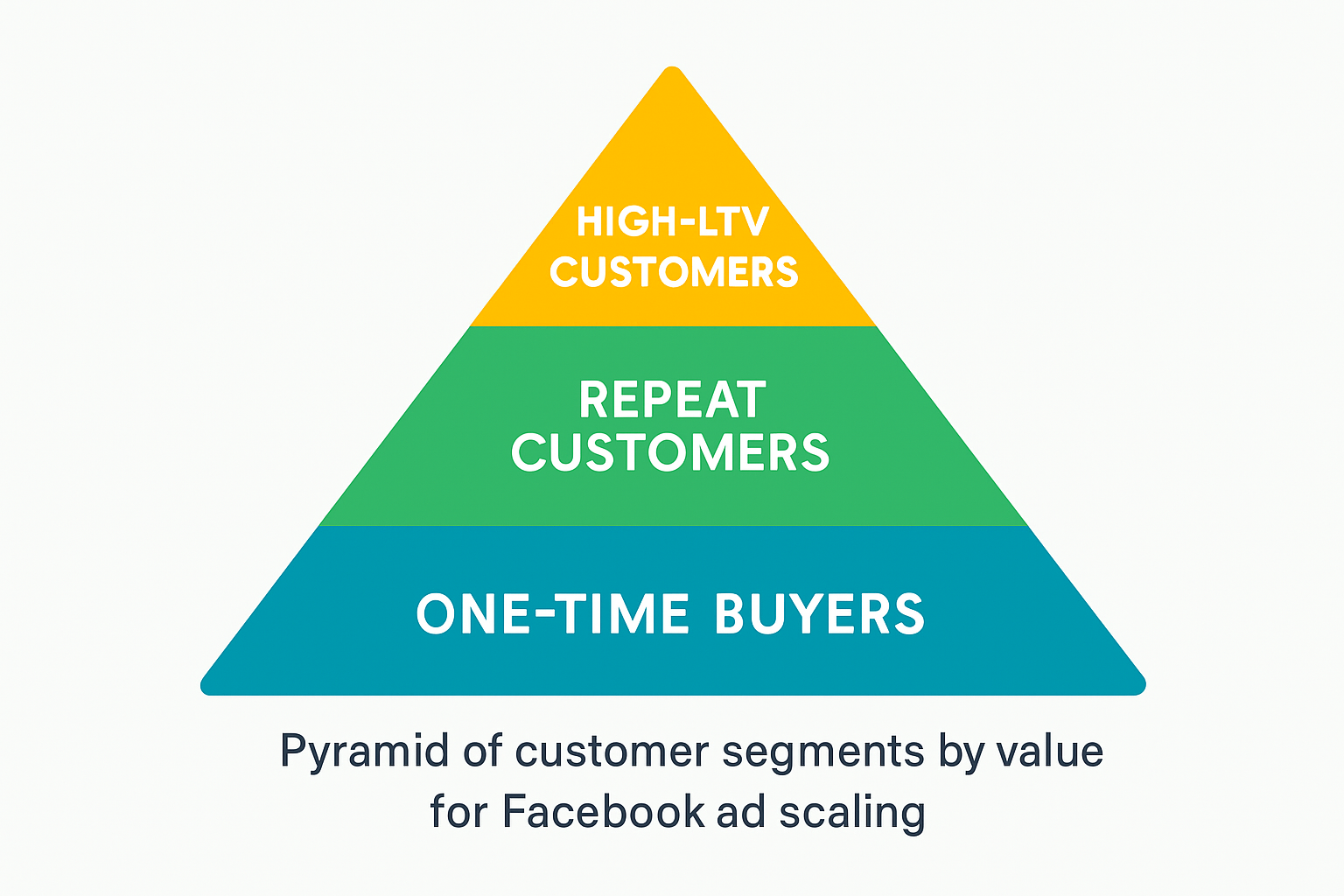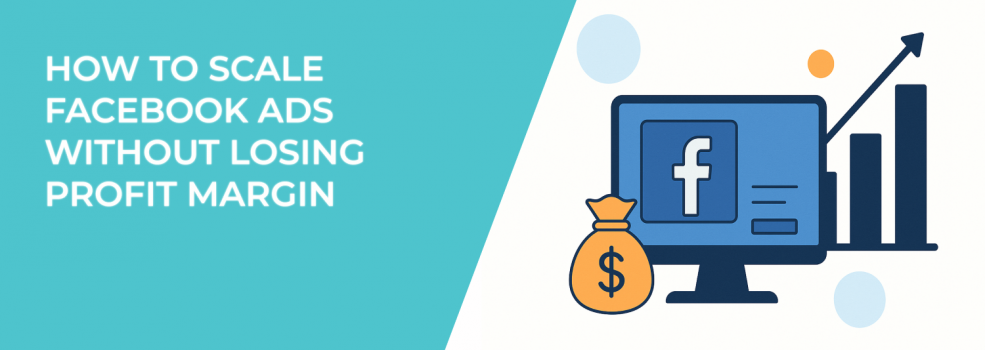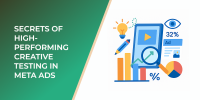Scaling Facebook Ads isn’t just about increasing budget — it’s about maintaining control over your cost per result, ROAS, and ultimately, your profit margin. If you’ve ever scaled a campaign only to see your costs spike and sales stall, this guide is for you.
Let’s break down the actionable strategies that will help you scale with precision — not panic.
1. Understand Your Profit Margins First
Before you scale anything, you need a crystal-clear understanding of how much you can afford to spend to acquire a customer.
Here’s what you should calculate:
-
Product costs: Include manufacturing, shipping, fulfillment, refunds, transaction fees, and packaging.
-
Break-even ROAS: Know the minimum ROAS you need to stay profitable — for many businesses, this is around 2.5–3.0.
-
Current CPA: Track your Cost Per Acquisition over the last 7, 14, and 30 days to spot trends.
-
Net margin at different spend levels: Estimate your profit margin as ad spend scales up.
Scaling without this baseline data is one of the biggest reasons Facebook ads fail to convert profitably.
Not sure where your limits are? Build a simple model that shows what happens when CPA rises 10%, 20%, or 30%. That will tell you how much cushion you actually have.
2. Don’t Just Increase Budget — Test Horizontally
One of the safest ways to scale is through horizontal scaling — expanding the number of ad sets, creatives, and audiences instead of pouring more money into a single winning setup.

Here’s how to do it:
-
Duplicate your best ad sets into new campaigns with slightly different audience segments (e.g., a 2% lookalike instead of 1%).
-
Test creatives in new formats, such as Stories, Reels, or carousel ads — even if the message is the same.
-
Launch new offers or bundles using the same products but different positioning (e.g., limited-time bundles, seasonal themes).
This reduces the pressure on any one audience and keeps your frequency low. It also helps you avoid “audience burnout” — which is one of the first symptoms of scaling gone wrong.
Want help choosing the right audience? Start with Facebook Ad Targeting 101 to refine your reach.
3. Avoid Sudden Budget Jumps
Scaling vertically — i.e., increasing budget on the same campaign — needs to be done gradually. A common rule:
-
Increase budget by no more than 10–15% every 2–3 days.
-
Monitor performance metrics for each increase — especially ROAS, CTR, and frequency.
-
Avoid editing multiple variables at once (e.g., budget and targeting and creative in one move).
Why? Because increasing spend too fast can push your campaign back into the learning phase. That means Meta resets performance signals and your results may suffer.
If you’re stuck in “Learning Limited” mode after a budget bump, this article explains how to finish the Facebook learning phase quickly.
Pro Tip: Use Advantage Campaign Budget only after you’ve validated ad sets. It works best when your ad sets are already proven.
4. Refresh Your Creatives Often — Even If They’re Working
One of the biggest scaling mistakes? Running the same creative for weeks during a budget increase.
Even top-performing ads lose effectiveness over time — and the faster you scale, the faster creative fatigue hits. According to Meta, ad fatigue can increase CPA by 30–50% if not addressed in time.
What to test:
-
New hooks in the first 3 seconds of video ads — to recapture attention.
-
Different thumbnail images — to improve click-through rates.
-
UGC vs polished video, or vice versa — to match different stages of the funnel.
-
Varying CTA language — e.g., “Shop Now” vs “Claim Your Offer.”
Not sure if your creative is losing steam? Watch for a rising frequency and declining CTR.
More tips here: Ad Fatigue on Facebook: How to Spot It Early and Fix It Fast.
5. Segment Audiences by Intent and Value
Not all audiences scale equally. When you’re trying to expand profitably, don’t just clone your best-performing lookalike.

Instead:
-
Build lookalikes based on high-LTV customers, not just purchasers — this leads to better quality traffic.
-
Segment retargeting audiences by funnel stage: for example, viewed product ≠ abandoned cart.
-
Use value-based custom audiences if you have customer revenue data from your CRM or Shopify.
Still getting strange warnings or delivery drops? This guide on ad set delivery issues can help you fix them.
6. Use Rules and Automation to Stay Profitable
As you scale, it becomes harder to monitor everything manually. Use Facebook’s built-in automated rules to protect your margins.
Helpful rules to set:
-
Pause ad sets if ROAS drops below your break-even point for more than 2 days.
-
Cut budget automatically if CPA increases by more than 25% week-over-week.
-
Increase budget incrementally if ROAS holds steady or improves over 3–5 days.
Use this guide for advanced setups: Scale Facebook Ads with Automation Without Sacrificing Quality.
7. Optimize Funnel Conversion Rates
Scaling an ad campaign with a broken funnel is like pouring water into a leaky bucket. Make sure your post-click experience is converting before you scale.
Key areas to optimize:
-
Landing page speed: Aim for a load time under 2 seconds on both mobile and desktop.
-
Mobile UX: Ensure forms, buttons, and checkout are seamless on small screens.
-
Offer clarity: Your headline, subtext, and CTA should align perfectly with your ad copy.
-
Trust elements: Add reviews, trust badges, FAQs, and real testimonials.
Even a 10% lift in conversion rate can bring your CPA back into profit territory.
8. Track the Right Metrics for Scaling
Don’t just watch ROAS. Dig deeper.
Key metrics to track while scaling:
-
ROAS trendline: Is it stable, rising, or slipping? Look at 3, 7, and 14-day trends.
-
Frequency: A frequency above 2.5 on cold audiences often means fatigue is kicking in.
-
CTR (Click-through rate): Declining CTR = declining interest. Try new hooks.
-
Blended CAC: Calculate total customer acquisition cost across all channels to see if scaling is still worth it.
Advanced insights? Read The Science of Scaling Facebook Ads Without Killing Performance.
Final Note: Scale with Intention, Not Just Ambition
Scaling is a test of discipline. It’s easy to spend more. It’s harder to spend profitably.
When you scale smart, you keep your acquisition engine healthy, sustainable, and aligned with your business goals.

